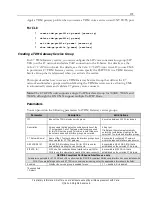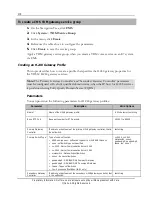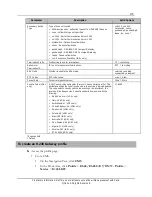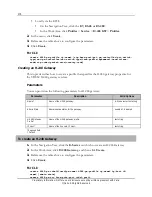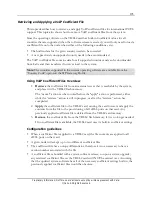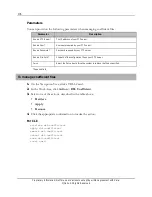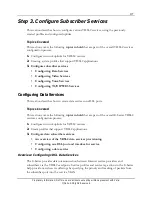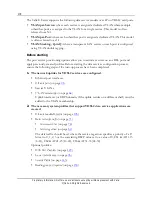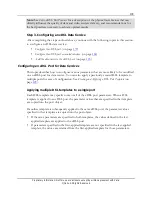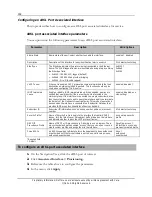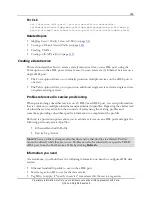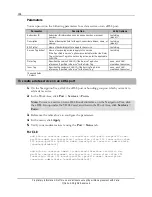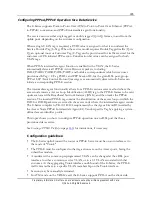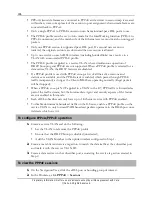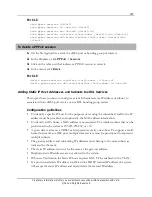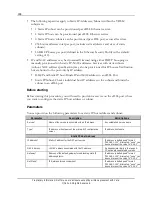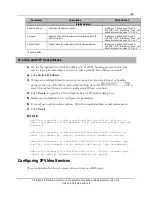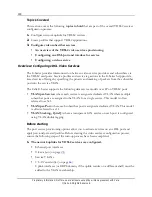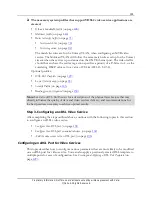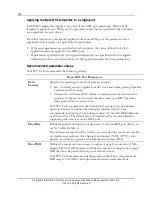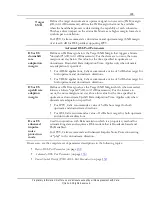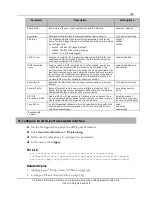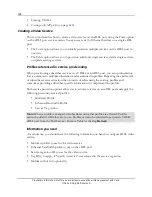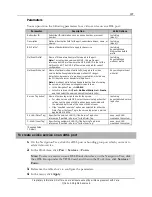
185
Proprietary Information: Not for use or disclosure except by written agreement with Calix.
© Calix. All Rights Reserved.
Configuring PPPoA/PPPoE Operation for a Data Service
The E-Series supports Point-to-Point Over ATM to Point-to-Point Over Ethernet (PPPoA-
to-PPPoE) conversion, and PPPoE intermediate agent functionality.
The service can use either single tagged or double tagged (Q-in-Q) frames, to and from the
uplink ports, depending on the customer configuration.
When a single VLAN tag is required, a PVID value is assigned to what is considered the
Service Provider Tag (S-Tag). When the service model requires Double Tagged traffic (Q-in-
Q), an optional inner or Customer Tag (C-Tag) can be provisioned for traffic received for the
customer or CPE initiated PPP session. Prioritization bit values can be assigned for both
VLAN tags.
When PPPoX intermediate agent function is enabled in the VLAN, the E-Series
automatically detects all PPPoE Active Discovery packets, including
PADI/PADO/PADR/PADS/PADT, and builds a correspondence table between user
provisioned S-Tag / C-Tag PVIDs, and PPP Session ID, for the given DSL port/group.
PPPoA LCP (Link Control Protocol) messages are automatically detected so E-Series can
initiate a corresponding PPPoE session.
The intermediate agent functionality allows for a PPPoE session access method where the
access node inserts a Access Loop Identification (ALID) tag to the PPPoE frames to be sent
upstream toward the Broadband Network Gateway (BNG), and then tracks the PPPoE
sessions. The inserted PPPoE tag contains the identification of the access loop on which the
PADI or PADR packet was received in the access node where the intermediate agent resides.
The E-Series complies to TR-101 R-124 requirements for the Agent Circuit ID inserted by
the Access Node PPPoE Intermediate Agent (IA) Vendor specific Tag by applying a system-
defined access-identifier profile.
This topic shows you how to configure PPPoE operation on an xDSL port that has a
provisioned data service.
See
Creating a PPPoE Profile
(on page
146
) for instructions, if necessary.
Configuration guidelines:
The E-Series uplink toward the router or PPPoE Server must be on an interface set to
the mode of "Trunk."
The PPPoE must be configured so that tag actions are on the Access ports, facing the
subscriber modem.
A modem with a common preprogrammed VLAN can be changed at the xDSL port
interface to either a common service VLAN, or to a 1:1 VLAN associated with that
customer. At the aggregating Trunk interface northbound of the E-Series, the PPPoE
traffic must adhere to a specific VLAN membership on the Trunk interface.
Sessions may be manually terminated.
In ATM mode on the VDSL2 card, the E-Series supports PPPoA on the client side.

